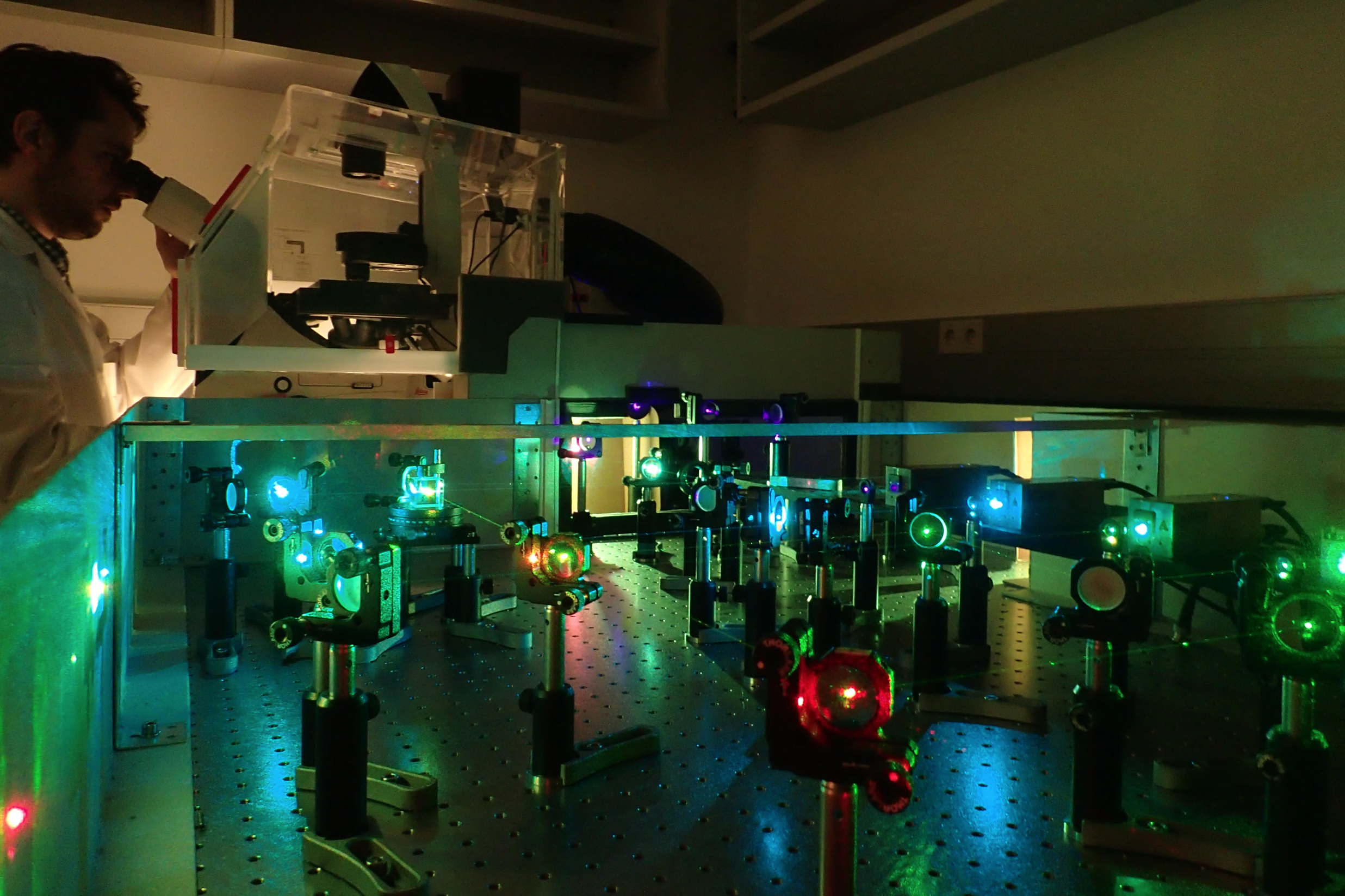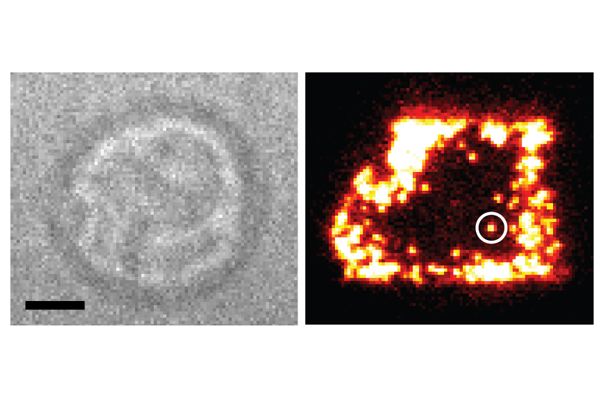
(Vienna, 17 April 2018) What happens when T cells take notice of suspicious activities in the body? Researchers from the TU Wien and the Medical University of Vienna revealed that immune receptors of T cells operate in unsuspected ways.
Without our T cells we are prone to die, as they protect us from the daily onslaught of bacteria and viruses and also from cancer. At times however, they also confront us with formidable challenges: if not stopped by immunosuppressive drugs T cells rapidly cause rejection of transplanted organs. And when misguided, they trigger allergies and chronic, often fatal autoimmune diseases such as type 1 diabetes, arthritis and multiple sclerosis.
T cells constantly renew their cell surface with thousands of highly sensitive T cell antigen receptors (TCRs), which allow them to identify molecules that are atypical or foreign to our body. T cells either directly kill carriers of such molecules, e.g. virally infected or cancer cells, or alarm other immune cells to start a full-blown immune response. Figuring out what happens in the course of T cell recognition on a molecular level is by no means a trivial task – “however fundamental knowledge of all involved molecular processes is critical for biomedical progress, in particular for devising effective high precision therapies against cancer and autoimmune diseases”, says Professor Johannes Huppa, an immunologist from the Medical University Vienna.
For many years now, he has joint forces with Dr. Mario Brameshuber, a biophysicist from the TU Wien. Back in 2010, the two started working together as postdocs at Stanford University in California, where they exchanged many ideas and laid the foundation for their joint venture. In Vienna they finally succeeded in visualizing individual TCRs ’at work’ on the surface of living T cells. While most opinion leaders in the field reasoned that TCRs must interact with one another as pairs or even larger order TCR structures, the Viennese study now shows: TCRs go it alone. This finding is indeed a surprise since T cells respond to a single foreign entity, termed antigen. The study has now been published in the journal “Nature Immunology”.
Even though the mechanisms underlying T cell recognition are integral to the inner workings of the immune system, our understanding is still limited. “This is because you really need to use an electron microscope in order to be able to see such tiny structures”, explains Brameshuber. “The downside is however that with electron microscopy you can only look at dead cells that are specifically prepared for this kind of analysis.” A unique aspect of this Viennese joint venture is the combined use of ultrasensitive live cell microscopy and highly defined molecular probes, which permitted the team to conduct truly molecular studies on living T-cells. “As a biochemist, this has always been a big dream of mine, simply because this combined experimental approach allows us to study short-lived molecular processes within their native cellular context, where they adopt function, and not in the test tube, that is removed from the all defining context of life”, says Huppa.

As ultrasensitive receptors, TCRs do not rely on team work and lead the way to novel and better therapies
“The outer membrane of the T cell ain’t like skin. Molecules embedded in the membrane are relentlessly on the move. This is also true for TCRs searching for antigens, they constantly change their location”, says Brameshuber. And so, the mechanism underlying the remarkable sensitivity of T cells towards antigens was regarded to depend on TCRs forming larger groups to collectively signal once a TCR binds a single antigen. However, as was now shown by the Viennese researchers, this assumption is just plain wrong. “Obviously the TCR is a fine-tuned lean mean machine, which translates antigen-binding events into intracellular signaling with an impressive degree of processivity. We can learn important lessons from how these receptors work, not only in purely academic terms but also for protecting organ transplants and for devising urgently needed next generation therapies to combat autoimmunity and cancer”, says Huppa.
One thing is for sure: only when we understand in detail, what goes wrong in T cells when they make us sick or no longer protect us, we can develop means of precise intervention.
Service: Nature Immunology
Monomeric TCRs drive T cell antigen recognition, Mario Brameshuber, Florian Kellner, Benedikt K. Rossboth, Haisen Ta, Kevin Alge, Eva Sevcsik, Janett Göhring, Markus Axmann, Florian Baumgart, Nicholas R. J. Gascoigne, Simon J. Davis, Hannes Stockinger, Gerhard J. Schütz, Johannes B. Huppa, Nature Immunology, DOI: 10.1038/s41590-018-0092-4.